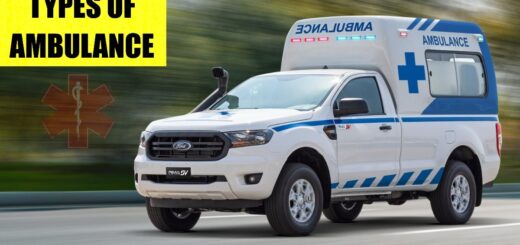28 Parts of Helicopter and Their Functions [Complete Guide]
![28 Parts of Helicopter and Their Functions [Complete Guide]](https://engineeringlearn.com/wp-content/uploads/2023/06/Parts-of-Helicopter-1024x539.jpg)
Introduction
28 Parts of Helicopter and Their Functions [Complete Guide]: – Helicopters can be utilized for many things. They can be utilized as flying ambulances to convey patients. They can be loaded or stacked with water to fight large fires. Helicopters are utilized to get supplies to ships. Helicopters can be utilized to transport large objects from one spot to another. Helicopters can safeguard people in hard-to-reach places like mountains or in difficult situations. There are numerous things that should be possible with helicopters.
What are Helicopters?
A helicopter is a noteworthy airplane that uses horizontally spinning rotors to generate lift and thrust. The unique design of a helicopter empowers it to perform impressive accomplishments like vertical takeoffs and landings, hovering in mid-air, and flying toward any direction forwards, in reverse, and horizontally. It is a remarkable engineering marvel that showcases how we might understand aerodynamics. Its ability to ascend in the sky and drift weightlessly is really entrancing, showing our mastery over gravity.
The perplexing design of each and every part of a helicopter is a testament to its extraordinary capabilities. Regardless of its complexity, the anatomy of a helicopter reflects human creativity and addresses a significant achievement in present-day engineering. The helicopter’s versatility and agility make it a symbol of human innovation and a source of inspiration for people in the future.
Parts of Helicopter
- Main Rotor
- Swashplate
- Engine
- Transmission
- Tail Rotor
- Stabilizers
- Hydraulic System
- Cooling System
- Rotor Brake
- Airframe
- Fuselage
- Cockpit
- Communication Systems
- Navigation Systems
- Instrumentation
- Electrical System
- Avionics
- Seats
- Doors
- Windows
- Landing Gear
- Fuel Tanks
- Fuel System
- Exhaust System
- Fire Suppression Systems
- Lighting Systems
- Flight Controls
- Emergency Systems
1. Main Rotor: ( Parts of Helicopter )
The main rotor of a helicopter comprised various blades attached or joined to a central hub that rotates or turns to generate lift. What separates the blade apart is their remarkable “twist,” with the angle of every blade varying along its length to optimize its lift and drag properties. Notwithstanding this design includes, modern helicopters face a limiting factor known as “retreating blade stall” while flying at high speeds.
This phenomenon happens when the lift produced by the blade on the side of the rotor inverse the direction of flight diminishes. It brings about an overall decline in the lift for the helicopter. This factor confines a helicopter’s maximum forward speed, highlighting the significance of rotor design in airplane engineering.
2. Swashplate: ( Parts of Helicopter )
The purpose of the swashplate is to direct the rotor blades to create the ideal lift, permitting the helicopter to perform many maneuvers. The swashplate system is unbelievably complex, including a stationary ring and a rotating swashplate. It transmits the pilot’s input to the rotor blades, controlling the Helicopter’s flight. Every part plays its unique role to build a wonderful and striking exhibition in the sky.
3. Engine: ( Parts of Helicopter )
Helicopter engines are wonders of engineering, providing the power vital to rotate or pivot the rotor systems while being compact and lightweight. Captivating that helicopter engines are designed to operate at a consistently high speed, with the rotor blade’s pitch angle being varied or fluctuated to control lift as well as direction. It is in contrast to a fixed-wing aircraft, where the engine’s output is utilized to drive the aircraft’s forward motion.
4. Transmission: ( Parts of Helicopter )
The transmission system in a helicopter plays an essential part in transferring power from the engine to the rotor systems. Nonetheless, its design can contrast altogether across different helicopter models, with some utilizing gears, while others might utilize belts or chains. Moreover, a few modern helicopters utilize a high-level transmission system called the “integrated transmission” system. This innovative design integrates the engine, gearbox, and rotor systems into a solitary, compact unit, bringing about enhanced efficiency and reduced weight.
5. Tail Rotor: ( Parts of Helicopter )
The tail rotor might appear to be a relatively simple part, yet its engineering is everything except. For instance, a few helicopters utilize a “Fenestron” tail rotor, which is basically a ducted fan that sits in the tail section of the helicopter. This design offers a few benefits, including increased safety, decreased noise, and magnificent mobility. Also, a few helicopters have tried different things with “tail-sitter” designs, which permit the helicopter to take off and land in a vertical direction while resting on its tail.
6. Stabilizers: ( Parts of Helicopter )
Each helicopter has a stabilizer. his weight bar is mounted across the rotor. A damaged stabilizer is normal, however it need expert repair quickly. The stabilizer on a helicopter diminishes noise from the rotor and eliminates vibration from the rotor. It balances out the helicopter in every single flying circumstance, including hovering. Without a stabilizer, helicopters are difficult to control.
The vibration from the rotor without a stabilizer can make for an exceptionally harsh ride. Stabilizers essentially increase the controllability and steadiness of a helicopter. While a helicopter can run without a functioning stabilizer, it is ideal to have regular maintenance to ensure that the pilot doesn’t need to utilize the copter without a stabilizing system.
7. Hydraulic System: ( Parts of Helicopter )
This system utilizes hydraulic fluid to transmit power from the main engine to the rotor system, considering precise control of the helicopter’s movements. In any case, did you have any idea that the hydraulic systems in certain helicopters are capable of generating pressures of as much as 5,000 pounds per square inch? That is sufficient pressure to take a vehicle off the ground.
8. Cooling System: ( Parts of Helicopter )
Did you have any idea that helicopters need to operate in probably the harshest circumstances possible, from scorching deserts to freezing mountains? That is the reason the cooling system in a helicopter isn’t a simple radiator and fan. All things being equal, it frequently incorporates complex heat exchangers and other advanced innovations to ensure that the engine and different parts stay cool even in the most outrageous conditions.
9. Rotor Brake: ( Parts of Helicopter )
Rotor Brake is an essential and fundamental part and isn’t just like a basic brake pad or caliper. All things considered, it utilizes complex mechanisms to slow down or stop the rotation or revolution of the rotor system, frequently in no time or seconds . In some helicopters, the rotor brake can be activated automatically by sophisticated control systems, helping to prevent accidents and injuries during critical operations.
10. Airframe: ( Parts of Helicopter )
The structural designs of the helicopter are essentially designed and intended to give the helicopter its exceptional flight attributes. Airframe is one of essential and fundamental part of that structure. The mechanical structural design of a helicopter is known as the airframe.This structure is ordinarily considered to include or incorporate the fuselage, undercarriage, empennage and wings, and excludes the propulsion system. These air-frames are made of strong materials known to man, including titanium, Kevlar, and unobtanium.
11. Fuselage: ( Parts of Helicopter )
The fuselage is the helicopter’s body, and it plays a critical part in the helicopter’s stability, safety, and execution. As of late, helicopter manufacturers have been exploring new materials and designs to create lighter, more sturdy, and more efficient fuselages. One exceptional approach includes utilizing biodegradable materials like mushroom-based composites to create the fuselage. These materials are eco-friendly and feasible, making them a viable option for the future of helicopter design.
12. Cockpit: ( Parts of Helicopter )
The cockpit is the control center of the helicopter, and it is where the pilot oversees and navigates the helicopter. In modern helicopters, the cockpit is equipped or furnished with state-of-art aeronautics and control systems that permit pilots to fly easily and with precision. Yet, have you at any point considered what controlling a helicopter without a traditional cockpit could be like? A few modern designs propose utilizing virtual reality headsets to create a 360-degree perspective of the helicopter’s environmental factors, permitting pilots to see beyond the limits of traditional cockpit windows.
13. Communication Systems: ( Parts of Helicopter )
Communication is the way to success in any field, and helicopters are no exemption. With plenty of communication systems available to them, helicopters are generally in contact with air traffic control, other airplane, and ground crews. The communication systems in helicopters are so advanced that they could even communicate with extraterrestrial creatures, should the need emerge.
14. Navigation Systems: ( Parts of Helicopter )
Navigation through the air can be a challenging one, yet helicopters have advanced navigation systems that have it completely under control. These systems are precise to such an extent that they can navigate through the densest fog or mist or the thickest storm clouds easily. Helicopter navigation systems are so precise or exact to the point that they could in fact direct you to the most remote regions of the world, regardless of whether you have a map.
15. Instrumentation: ( Parts of Helicopter )
Instrumentation in a helicopter includes or incorporates a variety of sensors, indicators, and showcases that give pilots vital information on the position of airplane, speed, elevation, performance of engine, and other critical systems. The instrumentation suite comprises of numerous instruments, for example, the altimeter, velocity marker, vertical speed indicator, engine instruments, and route or navigation instruments.
16. Electrical System: ( Parts of Helicopter )
The electrical system is the operational hub of the helicopter, which is responsible for powering and controlling the different electrical parts onboard accessible on the helicopter. The battery resembles the brain, providing the initial spark to start the engine, while the generator resembles the spinal cord, producing electricity to power the helicopter’s systems. The electrical wiring sends signals all through the helicopter, permitting the pilot to control and monitor the helicopter’s systems with precision.
17. Avionics: ( Parts of Helicopter )
Avionics to the electronic systems and equipment utilized in the helicopter, includes communication, navigation, and monitoring systems. These systems are essential for ensuring the safety and efficiency of the helicopter, and manufacturers are continually exploring new innovations to further improve avionics execution. One novel way to deal with avionics is to utilize artificial intelligence and AI algorithms to create intelligent helicopter systems. These systems can analyze data from sensors and cameras to distinguish potential safety hazards and provide real-time feedback to pilots, enhancing safety and decreasing pilot workload.
18. Seats: ( Parts of Helicopter )
The design of Manufacturer’s helicopter seats ensure travelers’ safety, security as well as comfort, Its because seats plays an essential part in such manner. In flight, travelers experience harsh conditions and extreme maneuvers, making it important to design helicopter seats that can endure these conditions. The seats should offer maximum support to both passengers and pilots. Safety and harnesses to keep travelers from being jolted out of their seats during any kind of turbulence or abrupt developments, seats play a very vital role.
19. Doors: ( Parts of Helicopter )
Doors (Entryways) in helicopters serve a few critical functions, which includes providing admittance to the cabin, ensuring the security of passengers, and adding to the airplane’s streamlined features. Helicopter doors(entryways) are generally made using lightweight materials like aluminum or composite materials. They may be fitted with locks, hinges, and emergency release systems to prevent accidental openings during flight. Helicopter doors should be carefully designed to try not to create turbulence, which can destabilize the helicopter.
20. Windows: ( Parts of Helicopter )
Manufacturers design helicopter windows to withstand extreme conditions, such as high-speed winds, sudden temperature changes, and vibrations, using durable materials such as polycarbonate, acrylic, or glass. They may also treat them with coatings to enhance their resistance to abrasions, impacts, and ultraviolet (UV) radiation. To prevent or forestall leaks and ensure air tightness at high altitudes, specialists typically fit helicopter windows with unique seals.
21. Landing Gear: ( Parts of Helicopter )
The Landing gear permits the helicopter to take off and land safely. Customarily, the landing gear has been designed as skids or wheels attached or connected to the underside of the fuselage. One-of-a-kind approach is to land and take off a helicopter in an upward direction, without the requirement for wheels or skids. These purported “hover-bikes” use ducted fans to produce lift and propulsion, permitting them to hover and move such that traditional helicopters can’t.
22. Fuel Tanks: ( Parts of Helicopter )
Helicopters require fuel tanks to store the fuel essential for powering the engine, making them an essential part. Engineers regularly construct these tanks from lightweight materials like aluminum or composites, to limit weight and increment fuel efficiency. Engineers should cautiously consider the placement of the fuel tanks to ensure the helicopter maintains its equilibrium as well as safety during flight, even as the fuel level changes. Moreover, designers should create fuel tanks equipped for enduring the extreme conditions experienced during flight, like high altitudes and turbulence.
23. Fuel System: ( Parts of Helicopter )
The fuel system resembles the bloodline of the helicopter, delivering or conveying life-giving fuel to the engine. These fuel tanks resemble a ravenous stomach, capable of holding a few hundred gallons of fuel. The fuel lines are like veins, carrying the precious fuel from the tank to the engine. The fuel pump resembles the heart, pumping the fuel to the engine at the right flow rate and pressure, keeping the engine running along as smoothly as well as effectively.
24. Exhaust System: ( Parts of Helicopter )
The exhaust system is responsible and liable for routing the hot gases produced during combustion away from the helicopter and forestalling the development of harmful exhaust fumes. Without the exhaust systems, a helicopter’s engine would rapidly overheat, which leads to a devastating failure. Furthermore, the exhaust system likewise plays a crucial part in diminishing the noise of the engine, ensuring that the helicopter doesn’t disturb the tranquility of those on the ground.
25. Fire Suppression Systems: ( Parts of Helicopter )
Helicopters are designed to endure outrageous circumstances, including fire. The fire suppression systems in helicopters are strong to such an extent that they can extinguish a raging fiery blaze with simply a solitary blast.
26. Lighting Systems: ( Parts of Helicopter )
Lighting systems are important for helicopters that operate during evening or low-light conditions. Navigation lights, landing lights, and anti-collision lights are critical parts of a helicopter’s lighting system. Pilots use navigation lights to indicate and demonstrate the position and direction of any movement of their helicopter to other airplanes. They depend on landing lights to provide extra illumination during helicopter take-off and landing, and they activate anti-collision lights to increment visibility and lessen the risk of any kind of crash.
27. Flight Controls: ( Parts of Helicopter )
Flight controls are the critical mechanism that permits a pilot to control a helicopter’s movements in the air. It includes and incorporates the collective, cyclic, and tail rotor pedals. Collective control is utilized to adjust the pitch of the rotor blades in an collective way, permitting the helicopter to acquire or lose altitude. The cyclic control adjusts the angle of the rotor blades exclusively, permitting the helicopter to move forward, in reverse, or sideways. The tail rotor pedals control the direction of the tail rotor, which is utilized to counteract the torque produced by the main rotor.
28. Emergency Systems: ( Parts of Helicopter )
Emergency systems are critical parts of any helicopter, providing a method of escape or safeguarding in case of any emergency. It includes emergency floats, emergency exits, and emergency locator transmitters (ELTs). Emergency floats keep the helicopter above water in case of a water landing, while emergency exits provide a means of escape for travelers and crew. ELTs transmit a distress signal to look and rescue teams in case of an emergency, allowing for fast and effective reaction.
Conclusion
Helicopters are utilized for the vast majority and various reasons where they might be the most versatile vehicle in the world. A helicopter can do everything: float, land on uneven ground, travel upward, on a level plane, and each and every in the middle between. From leg-like skids or pallet to electric tail rotors, it will be intriguing or entrancing to see how much further the helicopter develops. Modern helicopters are safer, more efficient, and more useful than ever before. They operate in harsh and remote conditions, fly into difficult situations, and perform missions that no other sort of airplane might at any point achieve.
Helicopters affect our lives in many ways. A portion of the helicopters used for commercial purposes are really decommissioned military helicopters. Without a doubt, even businesses that gently use helicopters commercially ought to have a helicopter spare parts supplier close by.
Image Source: – helimart













